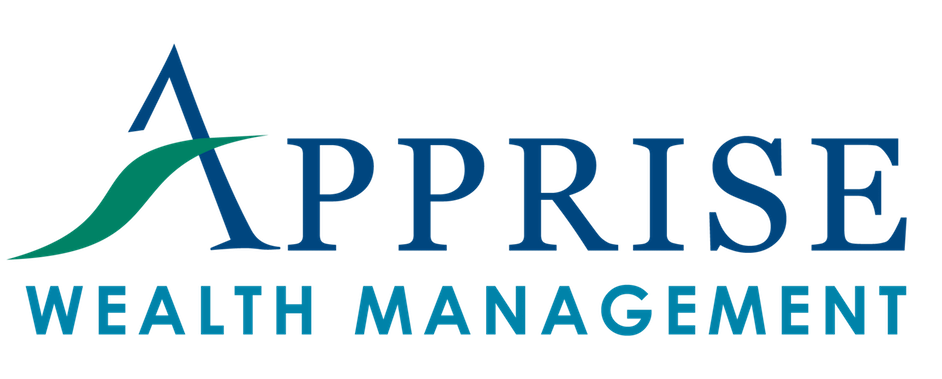Year end is fast approaching. While, we typically pay even more attention to taxes as December 31st approaches, effective tax planning can be done on a year-round basis.
In our last post, we discussed some tax tips related to the recently passed tax legislation. This time we will focus on some tips that can be applied throughout the year – not just at year end.
Tax-Loss Harvesting
While the market has made strong advances for the past several years, it is unlikely that every stock in your portfolio has moved higher. This year widely held stocks such as Mattel and Under Armour have delivered miserable returns (both are down more than 40% year-to-date). If you hold shares of companies such as these in your taxable portfolio, you can sell them and use the losses to reduce your tax bill.
First, such losses offset other capital gains you may have recognized earlier this year. In addition, you can recognize up to another $3,000 of excess capital losses a year – any excess capital losses can be carried forward until they are used. Recognizing such losses can reduce your tax bill. If you still like a stock you sell at a loss, you can generally repurchase it as long as you wait at least 31 days to do so.
An Example of Tax-Loss Harvesting
Assume you bought 200 shares of Under Armour at $25.50 on January 3rd and sold them now for $13.78, you would recognize a loss of $11.72 per share, or $2,334. If you are in the 28% federal tax bracket, and the losses are offsetting gains recognized earlier in the year, you will reduce your tax bill by $654 ($2,334 * 28%). If you are not offsetting other capital gains, and your capital gains are taxed at 20%, you will save $467 ($2,334 * 20%). Tax-loss harvesting such as this can be done at any time of the year by tax “aware” investors.
Donate Appreciated Shares Rather Than Cash
If you would like to donate to a favorite charity, you may want to donate appreciated shares that you have held for more than a year instead of cash. While not all charities are equipped to accept gifts of appreciated investments directly, donor-advised funds can be used to bridge the gap. These charitable accounts, offered by many financial institutions and community foundations, can facilitate the conversion of appreciated investments into tax-effective charitable contributions.
Once shares are transferred to a donor-advised fund account, they generally qualify for a fair market value deduction on the transfer date. That means you pay no capital gains tax when the investment is liquidated, and the cash proceeds can then be invested for potential growth. Donors can recommend grants to their favorite charities immediately or over time at their convenience.
A key advantage of donating securities is it can allow you to avoid capital gains taxes. This effectively allows you to make a bigger donation, as you do not have to sell the securities, pay the tax, and then donate the net amount.
Make a Charitable Donation Directly from a Retirement Account
If you are age 70 ½ or older, making a qualified charitable contribution from an individual retirement account provides a more tax-efficient method of philanthropic giving than withdrawing the money from the IRA and then donating the money.
Taxpayers can make qualified charitable contributions of up to $100,000 annually from a traditional IRA directly to a qualified charity. Tax law also allows you to roll funds from a 401(k) to an IRA and then make the qualified charitable contribution. This is an important distinction, as you cannot make such a distribution directly from your 401(k). Such qualified charitable contributions also count toward your required minimum distributions (RMDs) for the year. However, you cannot claim a charitable contribution on your tax returns. The reason you are not allowed to claim a deduction is that the withdrawn funds do not get reported as income either.
Using this strategy reduces your taxable income, which can also help limit the amount of your taxable Social Security benefits. In addition, some itemized deductions (e.g., medical expenses) can only be claimed to the extent they exceed a specified percentage of your adjusted gross income (AGI). By not including the amount of the RMD in taxable income, you may increase the amount of allowable itemized deductions as well.
If Applicable, Fund (or Create) Your Health Savings Account
Please note that Health Savings Accounts (HSAs) are only an option for those who have a qualified high-deductible health care plan, which has a lower monthly premium but requires the account holder to pay a certain amount of expenses out of pocket before insurance applies.
HSA contributions can only be made if you have a high-deductible health plan (HDHP). For 2017, HDHPs are defined as those with an annual deductible of $1,300 for self-only coverage or $2,600 for family coverage, and an out-of-pocket expense maximum
Most people do not take advantage of the full benefits of a health savings account, using it more as a checking account than as the investment vehicle it could be.
In general, HSAs allow eligible individuals to make tax-deductible contributions into a custodial account where the earnings inside the account are tax-free and the money can be withdrawn tax-free if it is used to pay for qualified health care costs. These represent tax benefits an individual retirement account or 401(k) cannot provide.
Contributions to an HSA are not “use it or lose it” either. Instead of reimbursing yourself for out-of-pocket health care expenses today, you can pay with taxable dollars today and keep a record of your expenditures. This means you can reimburse yourself at any time, even decades later. You can also use these funds to pay Medicare premiums and long-term care premiums and expenses.
In general, if you contribute to an HSA, you get a deduction in the year you contribute, which provides the same benefit as a traditional IRA. The big advantage is that if you have records to support the expenses, you can pull money out of your HSA without any tax consequences.
Convert IRA Savings to a Roth IRA at a Low Tax Rate
While contributions to Roth IRAs are not tax deductible, the amount in such accounts grows tax-free and distributions are also not taxed. Once you reach age 70 ½, you will be required to take distributions from traditional IRA accounts. Such distributions increase your taxable income and could cause your capital gains and Social Security payments to be taxed at a higher rate.
Depending on your 2017 income, it could make sense to convert some of your retirement funds into a Roth IRA. While you will pay taxes on the amount you convert, no future taxable distributions are required, and you may be able to lower the tax rate for capital gains and other income you earn. At Apprise Wealth Management, we have a calculator we can use to help you determine if a Roth IRA conversion makes sense for you.
Please note that if you wish to convert funds to a Roth IRA this year, you should also take into consideration that, if your income is generally similar in 2018, your tax rate may be lower.
Be a Tax-Aware Investor
Many investors are familiar with the concept of asset diversification, whereby you allocate your assets to different asset types (e.g., fixed income, equities, domestic, international) to try and minimize volatility and reduce risk.
Asset location is also important. If you have money saved in taxable and non-taxable (tax-deferred) accounts, you should consider which asset classes are invested in which type of account. For example, if you have taxable fixed-income or bond holdings, these are often best suited for your retirement accounts. Such investments typically pay interest that is subject to tax at your marginal tax rate.
On the other hand, assets with high growth potential, such as many stocks, generally belong in taxable accounts. This is because the dividends and capital gains (if the asset is held for more than a year) are taxed at lower rates, and you are in control of when the gain is recognized.
Open a Roth IRA for Your Child
If your child has earned income from a summer job or working during the school year, consider having them open a Roth IRA. If you have the funds, you can even make the contribution for them so that they can keep what they earn.
A Roth IRA is a particularly good choice for a young saver because it can provide decades of tax-free growth. If your child is under 18 or 21 (it varies by state), the account must be opened by an adult as a custodial account. Once your child is of legal age, they will have full access to the money.
The big advantage of this strategy is that it allows your child to take full advantage of the benefit of compounding. If you save $1,000 in a Roth IRA now, and it earns 6% annually, in 50 years it will grow to more than $18,000.
One caution: While owning a Roth IRA will not affect a student’s financial aid eligibility, IRA withdrawals and gifts can count as income for aid calculations. Some colleges may also hold the existence of an IRA against you in their aid formula by counting them as student assets that are assumed to be drawn down at a 25% rate.
Closing Thoughts
Implementing some or all of these strategies, as well as some others that we have not discussed, can result in significant tax savings. If done right, you will be left with more money after taxes. We are happy to work directly with you or with your other advisors, including your tax accountant to implement these strategies.
Follow us:
Please note that we post information about articles we think can help you make better decisions about money on Twitter.
For firm disclosures, see here: https://apprisewealth.com/disclosures/





